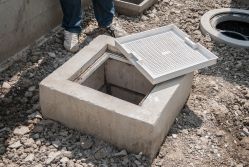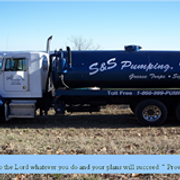Understanding Grease Traps & 3 Steps Professionals Take to Clean Them

If too much grease and oil are allowed to enter your commercial kitchen’s septic system, they could overwhelm the tank or block the drain pipes. A grease trap ensures all animal fats and vegetable oils are captured before they can enter the wastewater disposal system. Just remember to have the device cleaned by a professional at least every three months to ensure it continues to work correctly. Below are the cleaning procedures the experts typically follow.
3 Steps Professionals Take to Clean Grease Traps
1. Remove Sludge & Liquid
Once the grease trap has cooled, the lid can be opened. The cleaners will then clear off the top layer of sludge, which can be over two inches thick. Then, technicians will use a wet vacuum to suck up the remaining liquid.
2. Dilute & Remove Remaining Grease
 After the above materials have been cleared out, the cleaning team will use hot water to dilute any grease stuck to the sides of the trap. They might also have to use a scraper to fully remove any remaining gunk from the lid, sides, baffles, and inlet and outlet pipes.
After the above materials have been cleared out, the cleaning team will use hot water to dilute any grease stuck to the sides of the trap. They might also have to use a scraper to fully remove any remaining gunk from the lid, sides, baffles, and inlet and outlet pipes.
3. Test Water Flow & Dispose of Sludge
When they’ve finished cleaning, your sewer or septic service should test that the water can flow through the grease trap. This step ensures the intake pipes don’t have any blockages. Finally, they’ll take away all the sludge that accumulated in the device and dispose of it properly.
While it seems straightforward, there is a lot that goes into effectively cleaning a grease trap. To keep yours running smoothly, contact the professionals at S & S Pumping in Merriam Woods, MO. This fully licensed and insured business provides a comprehensive list of septic services to the Forsyth area — including septic tank and grease trap pumping. Schedule their assistance today by calling (417) 546-2390 and learn more about their services by visiting their website.
About the Business
Have a question? Ask the experts!
Send your question

